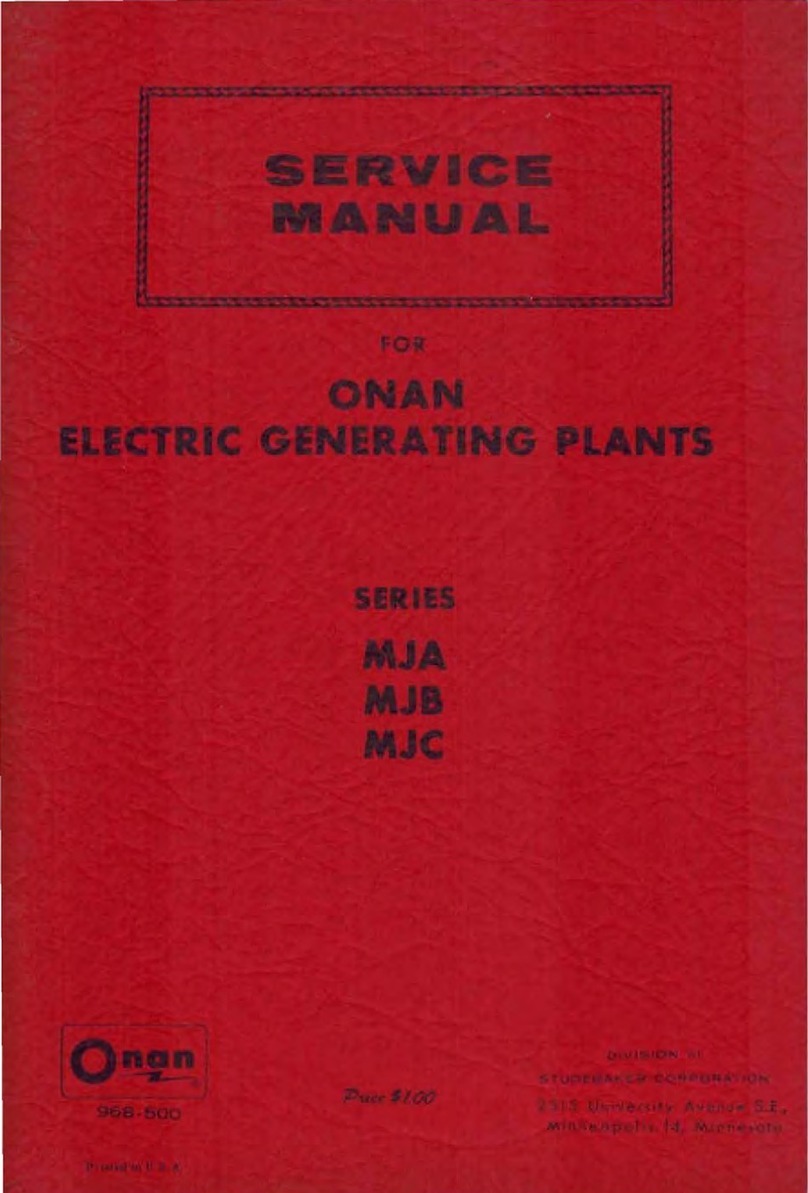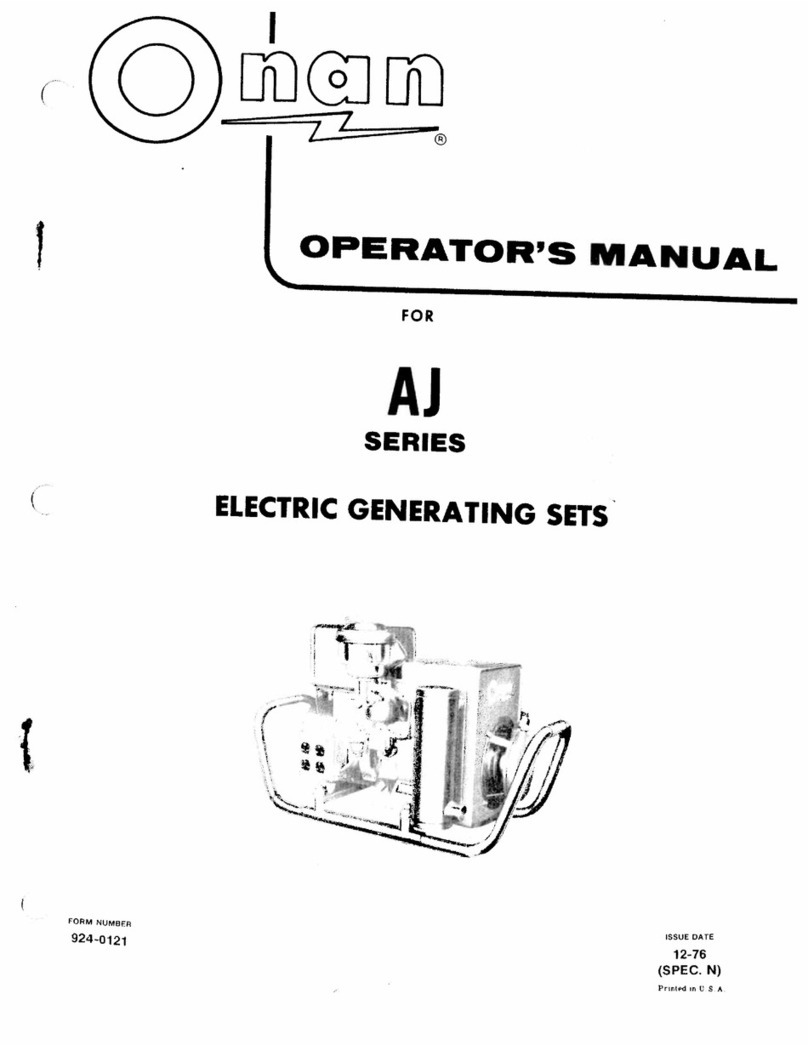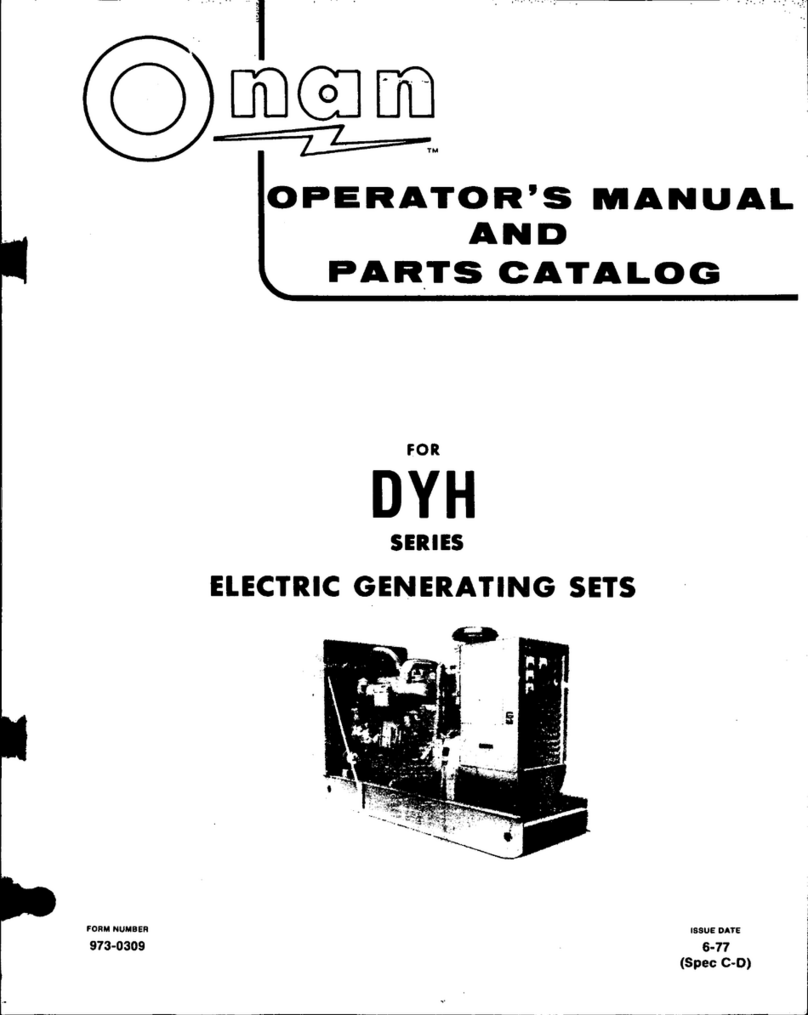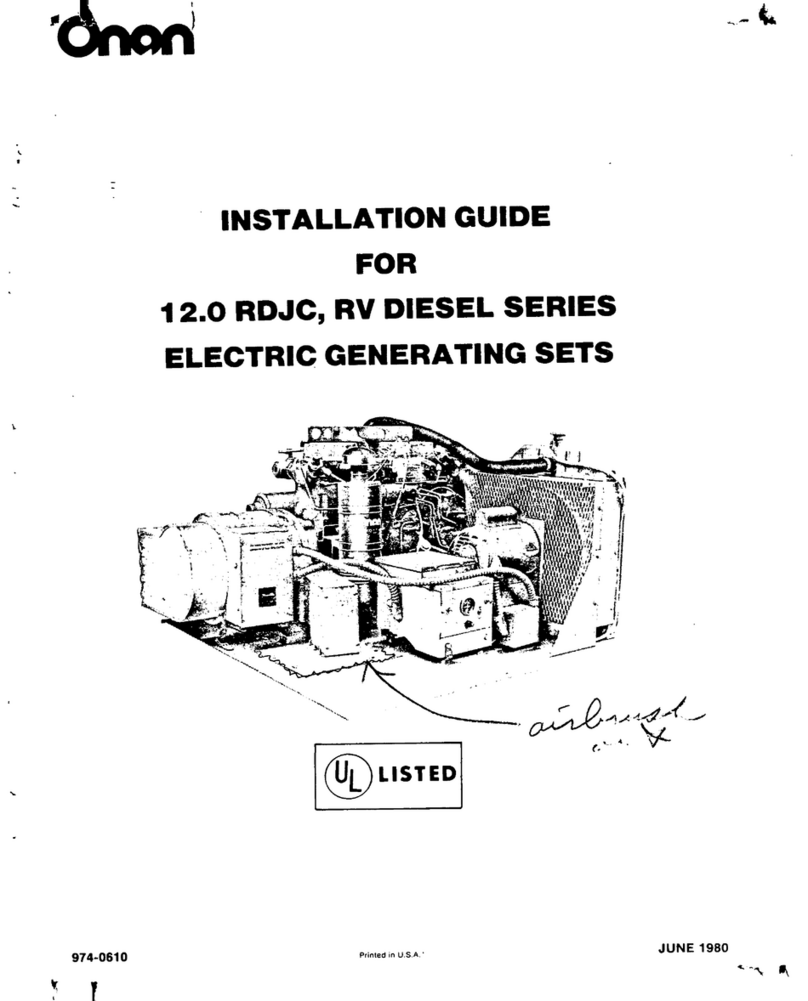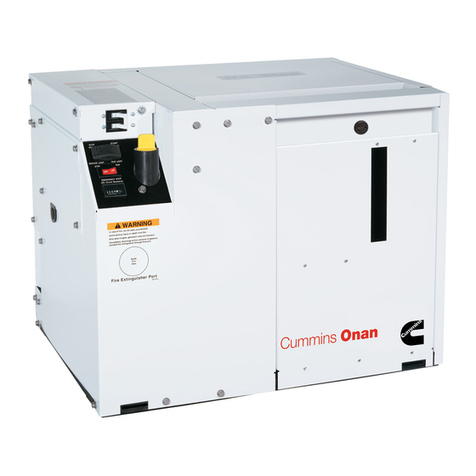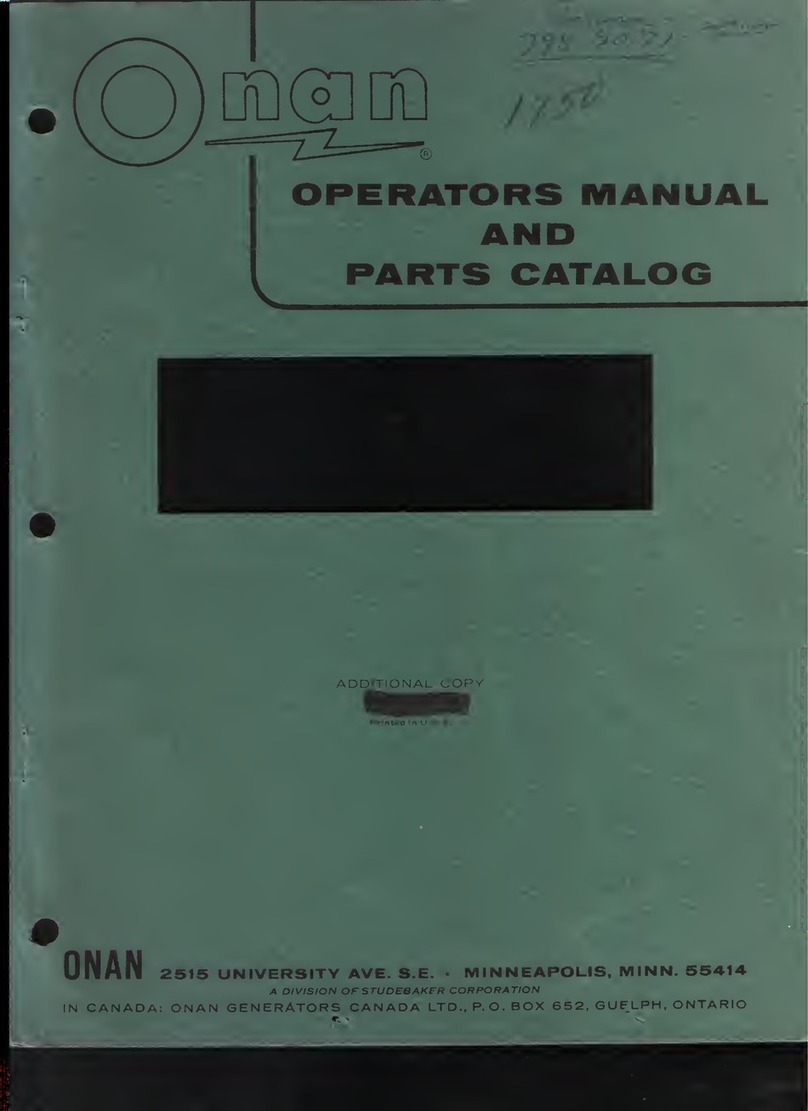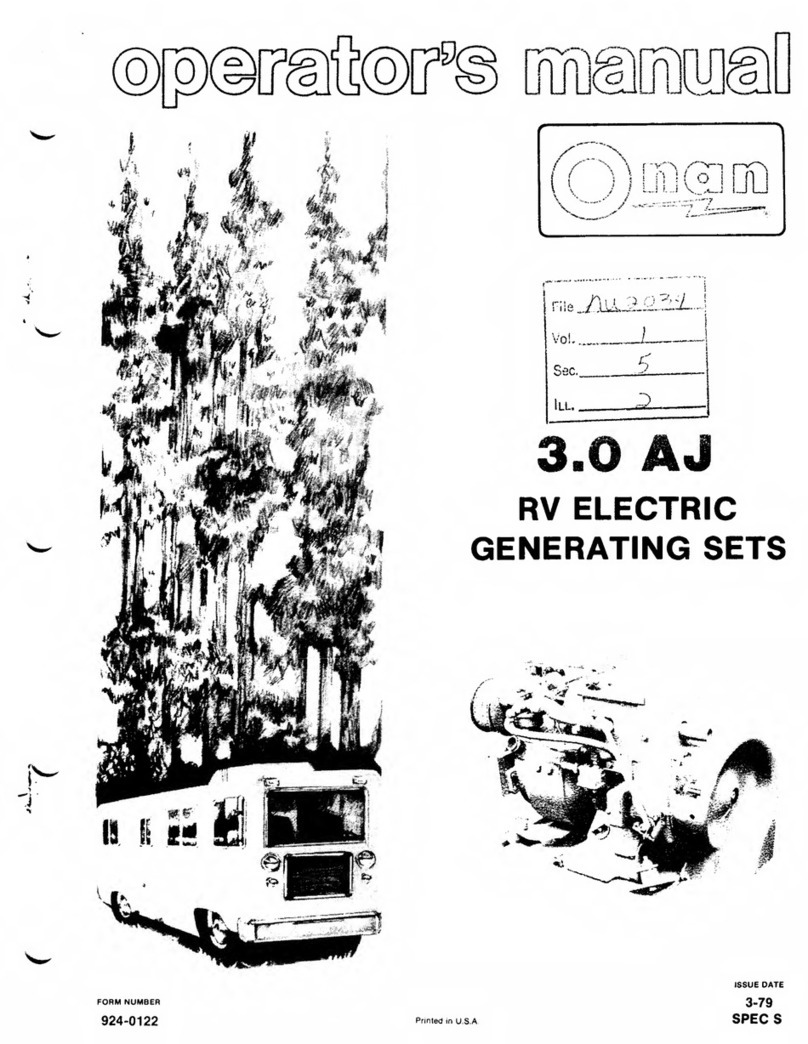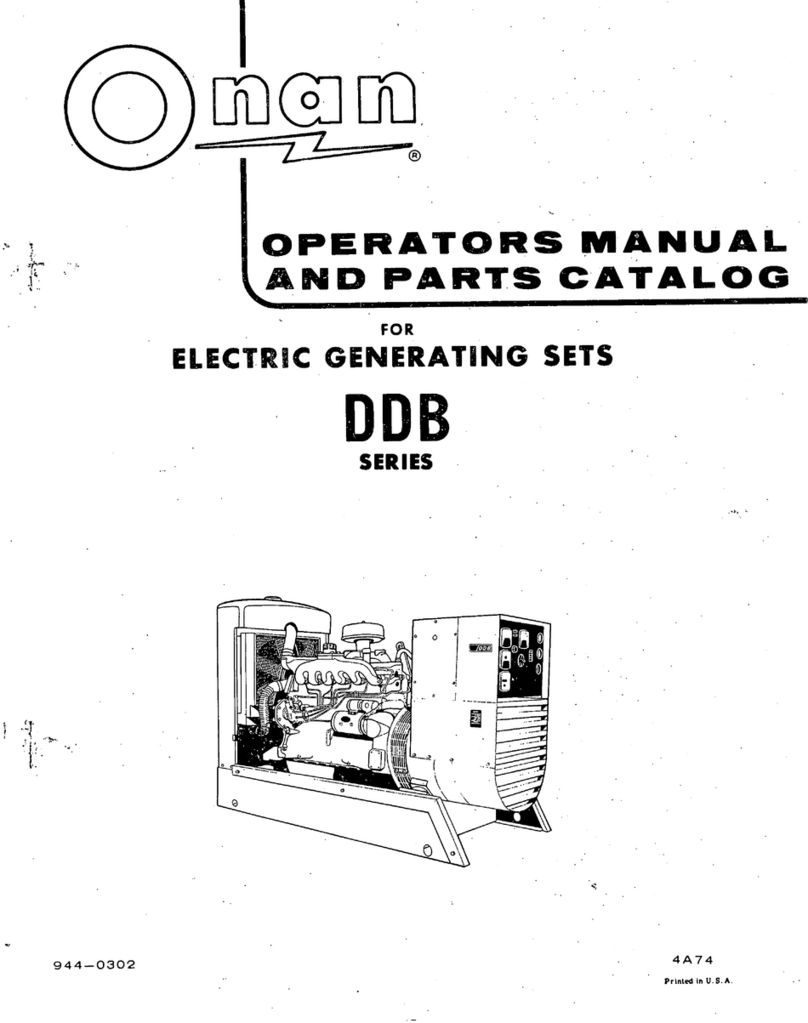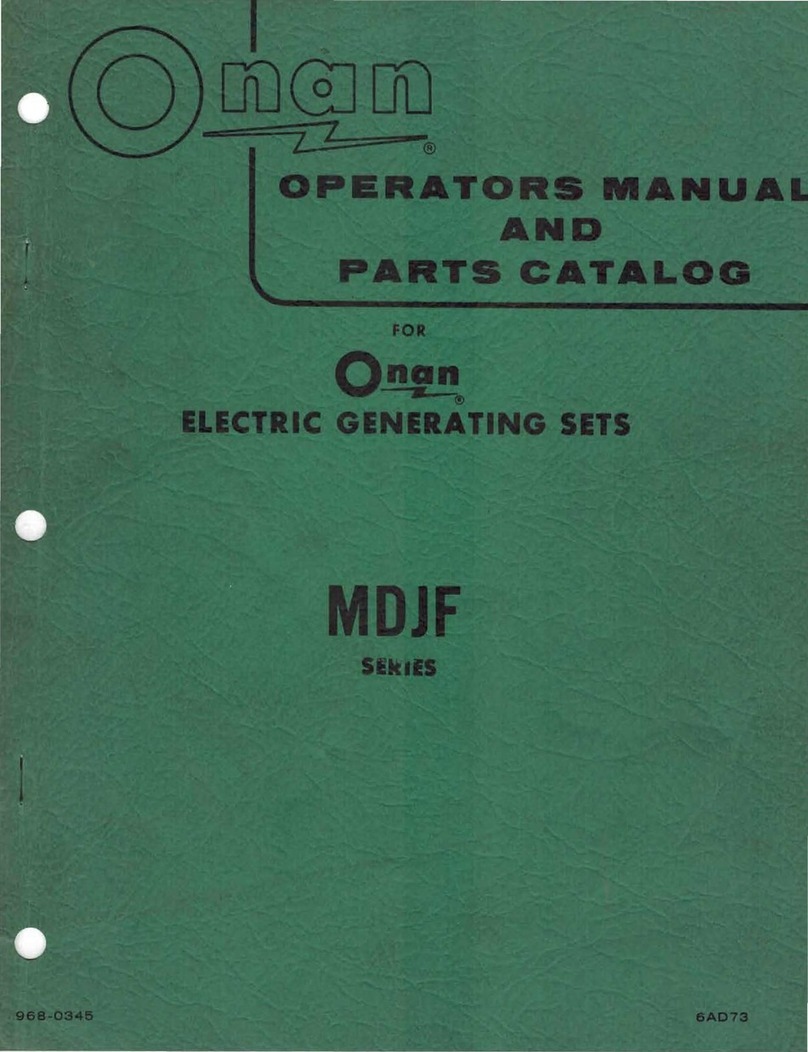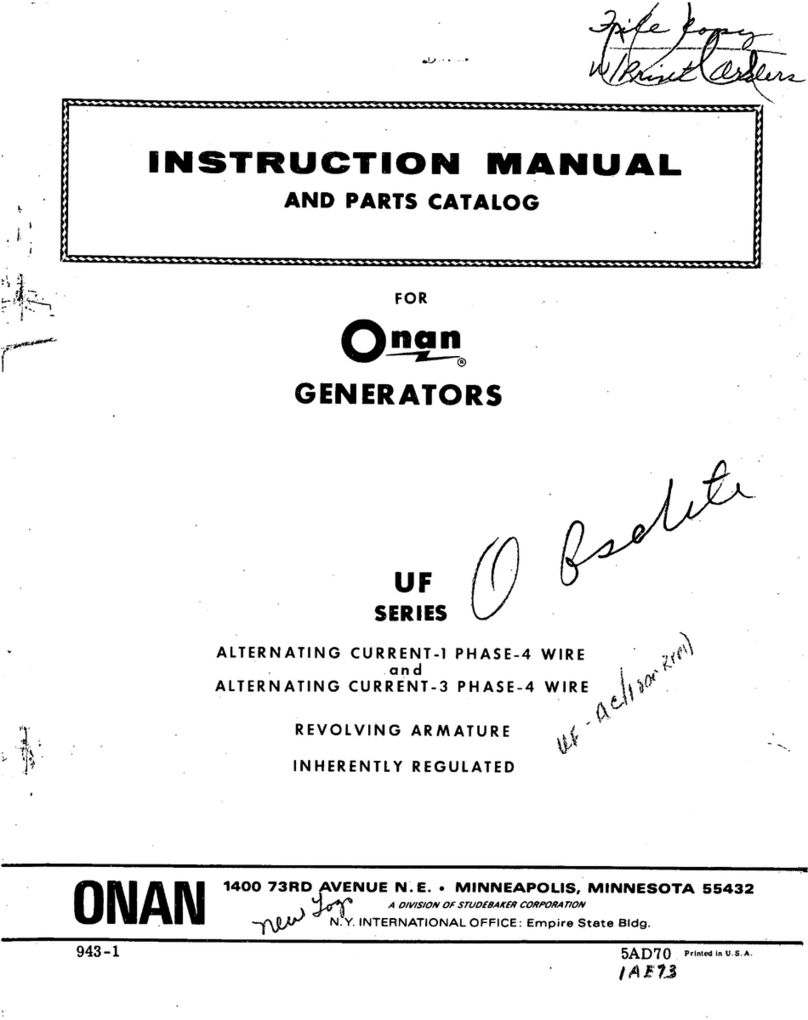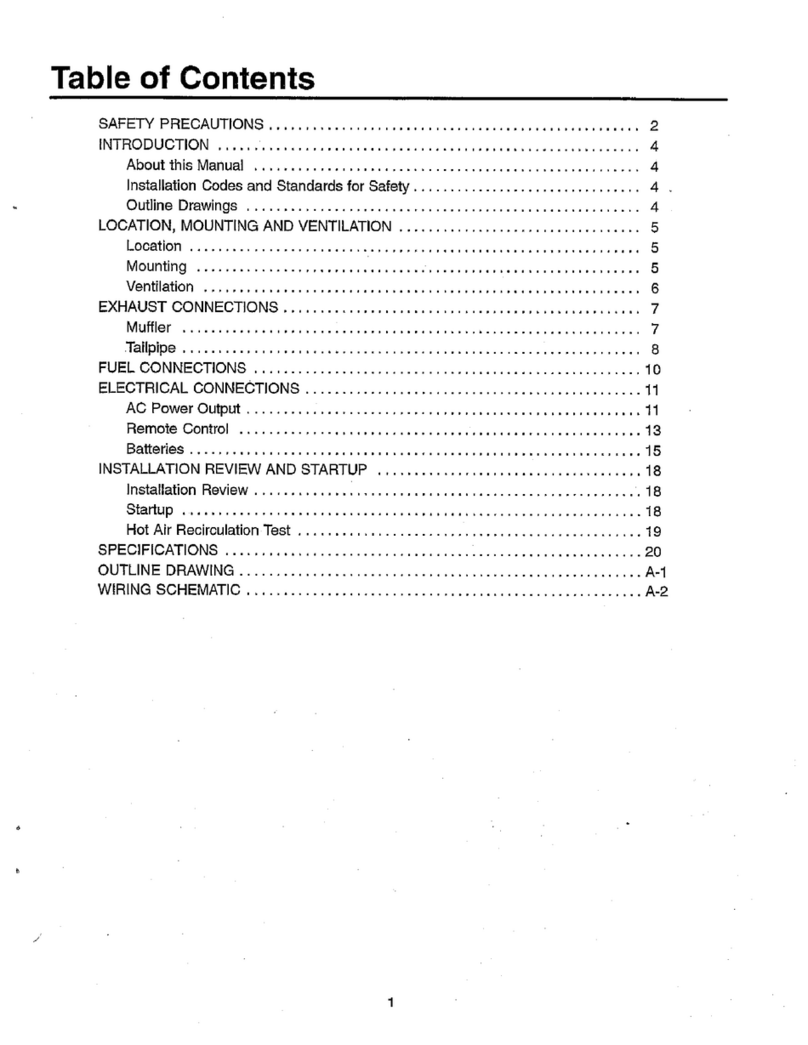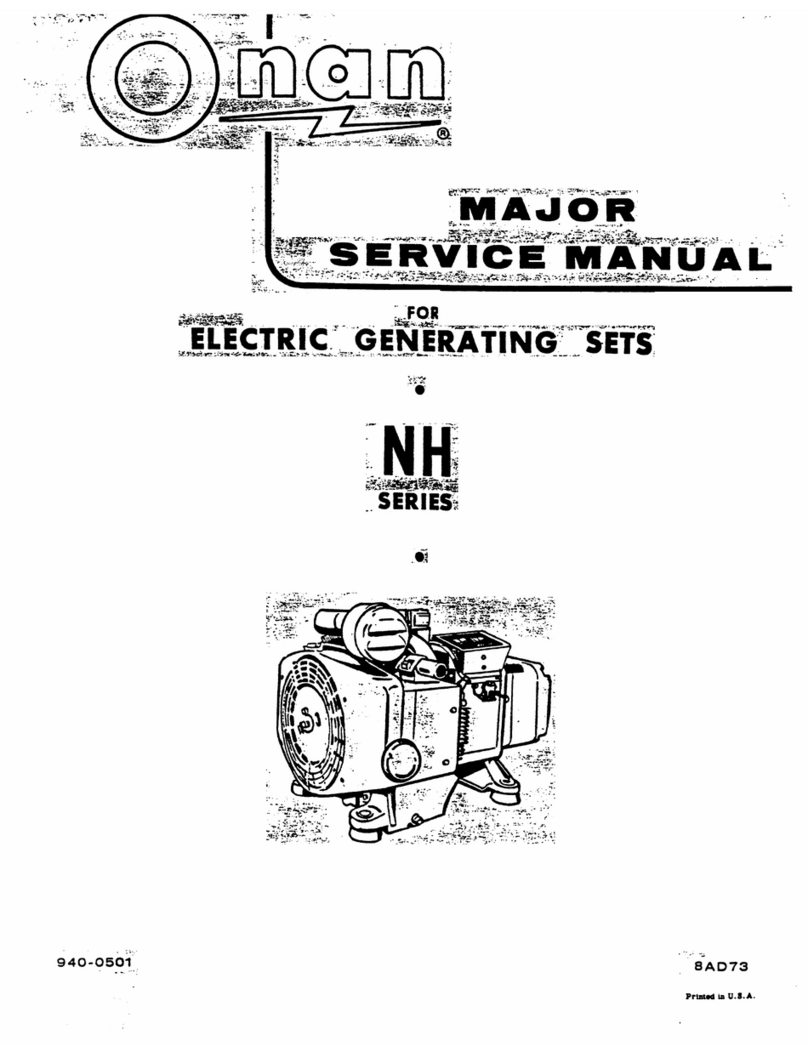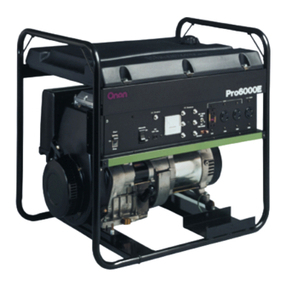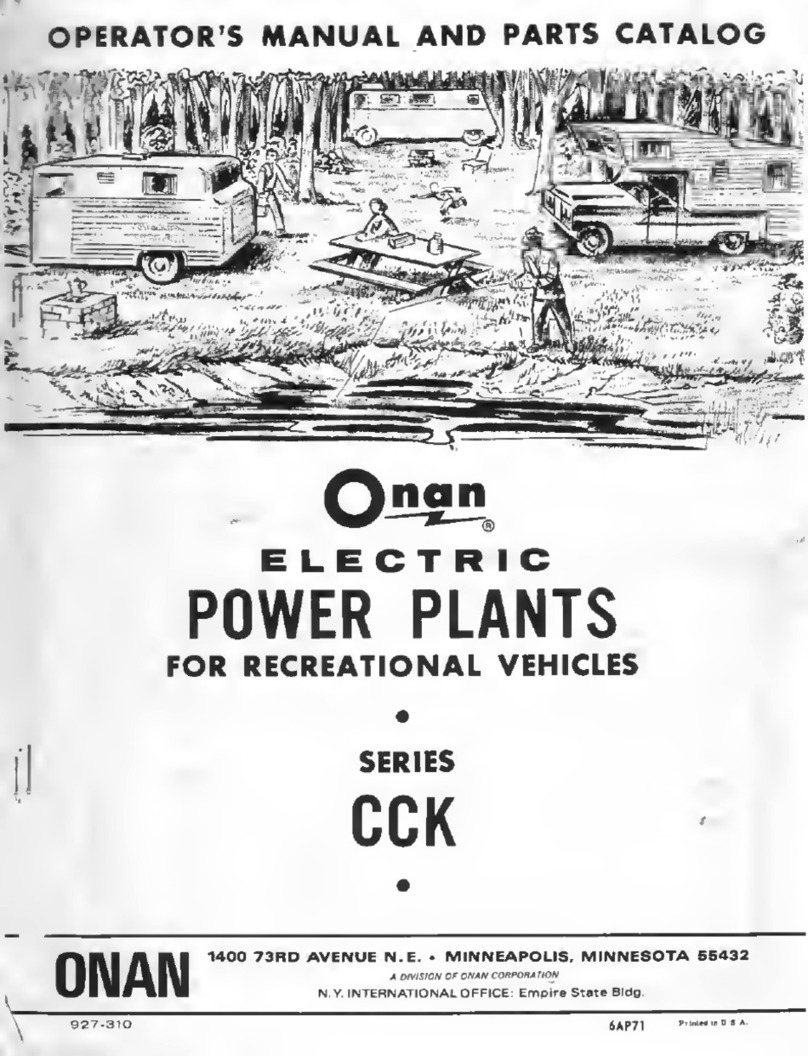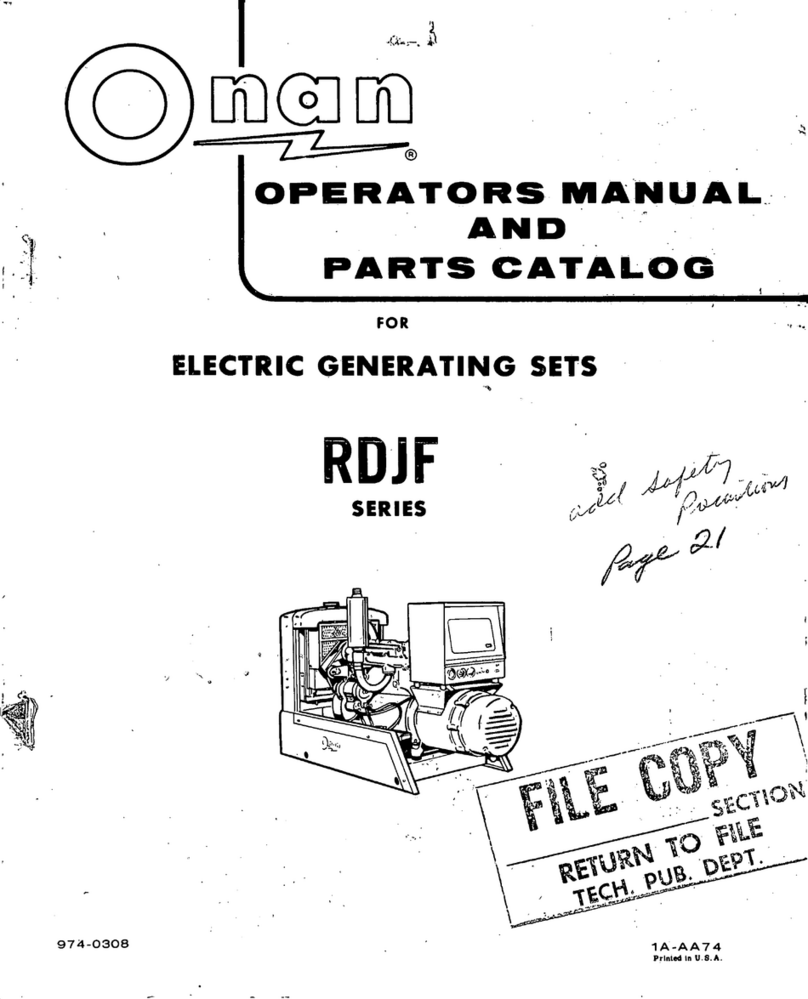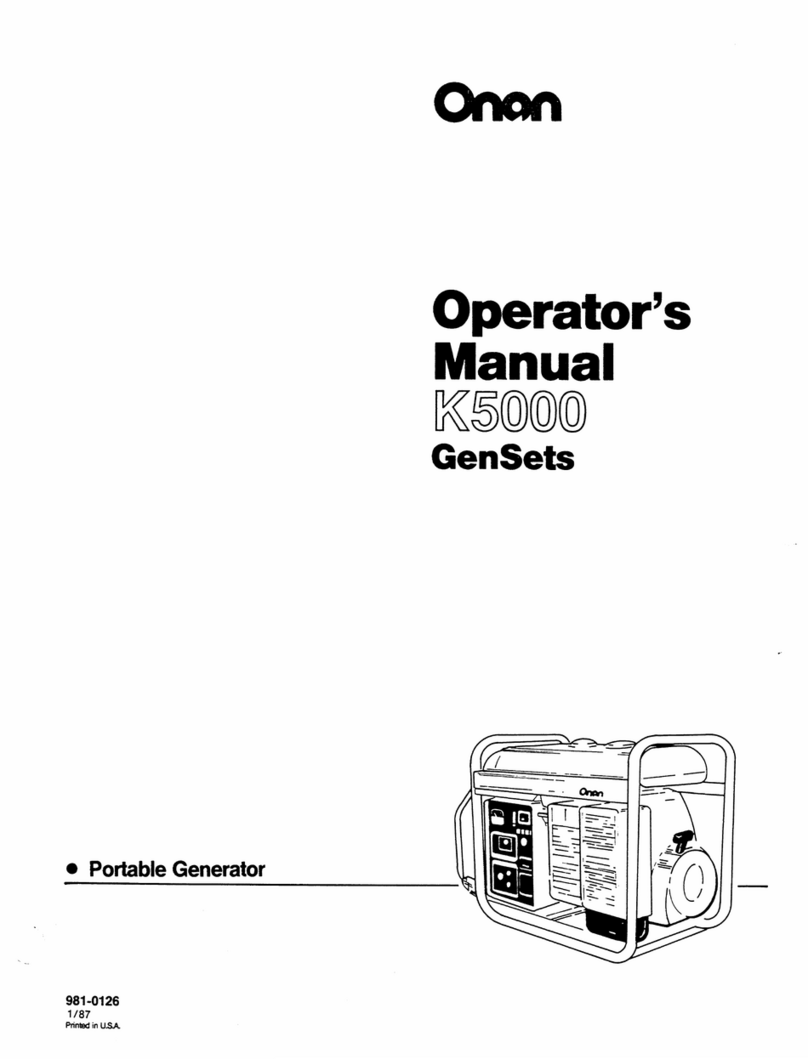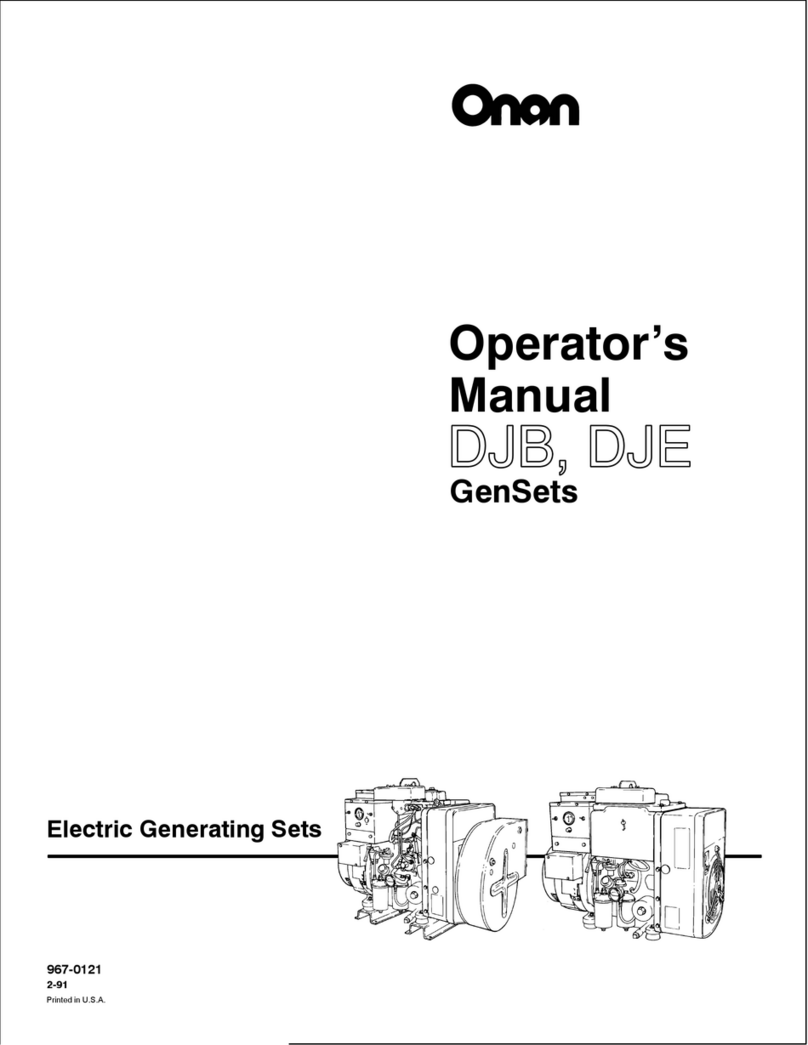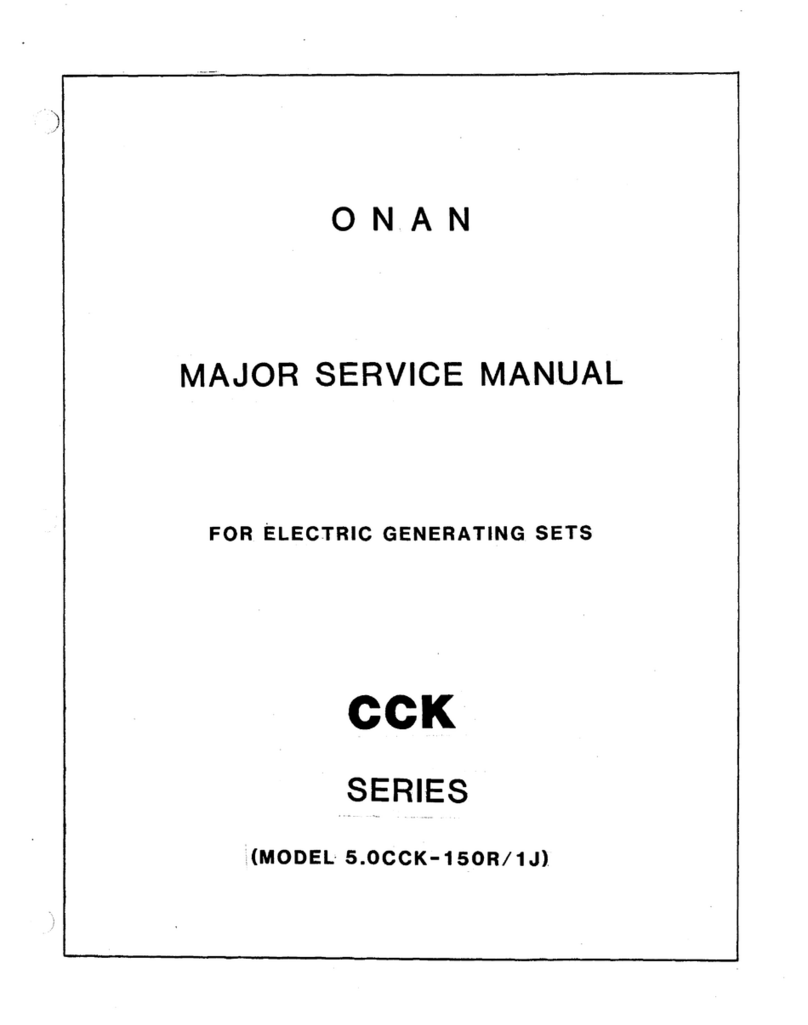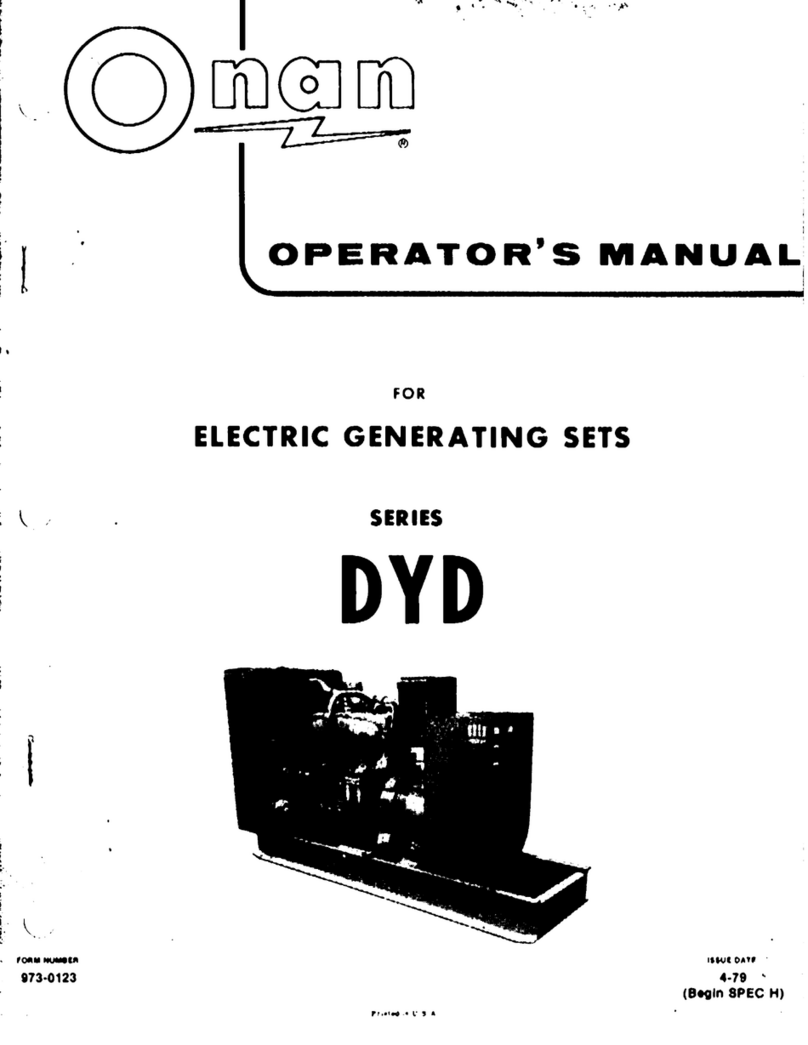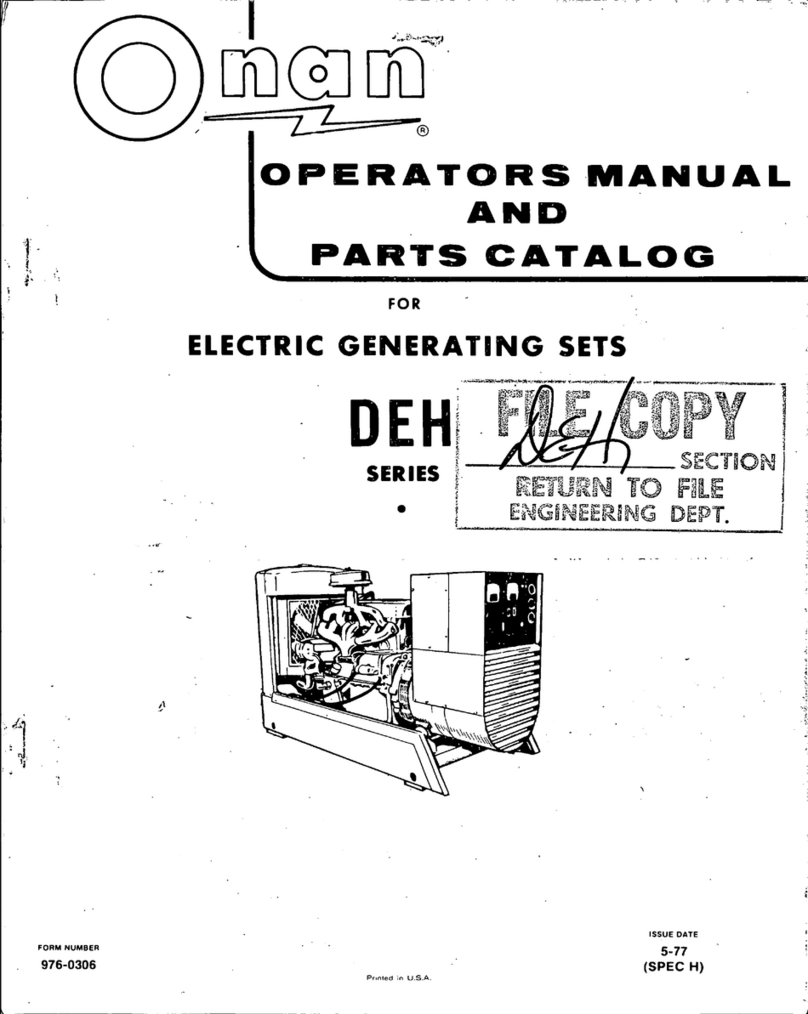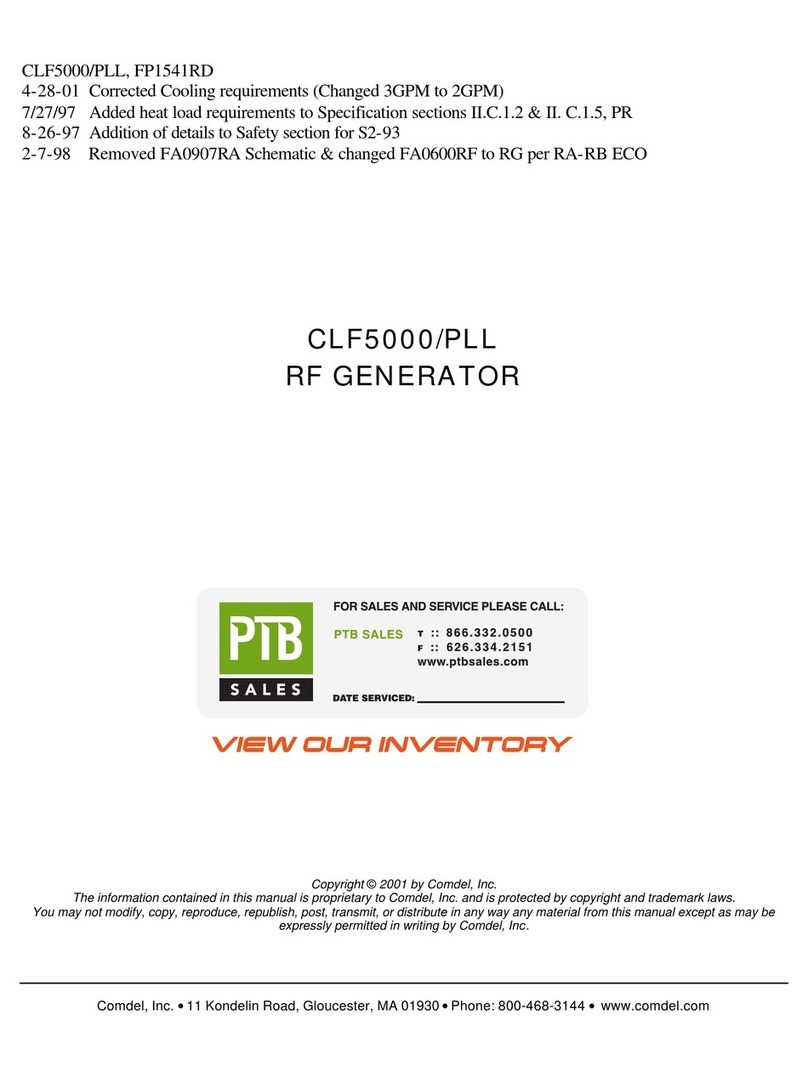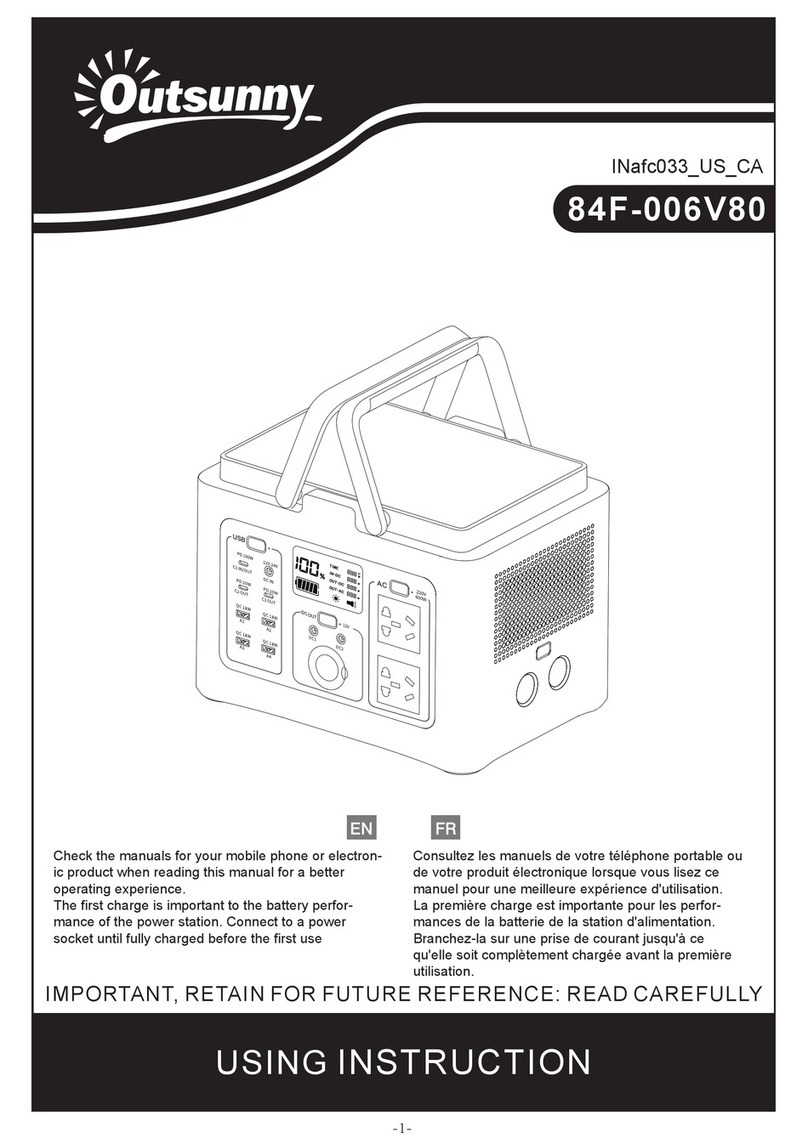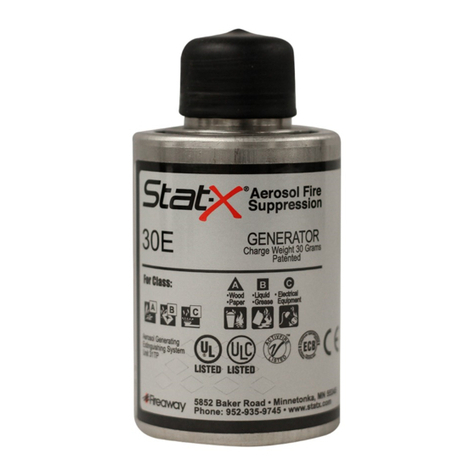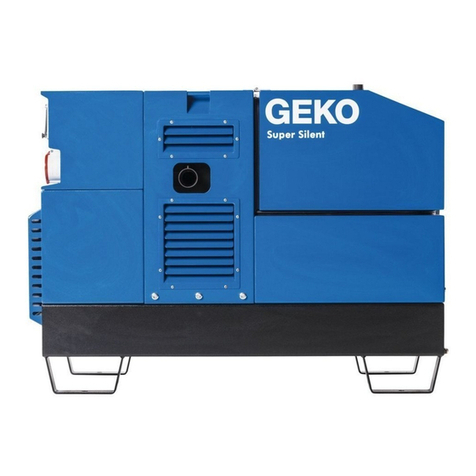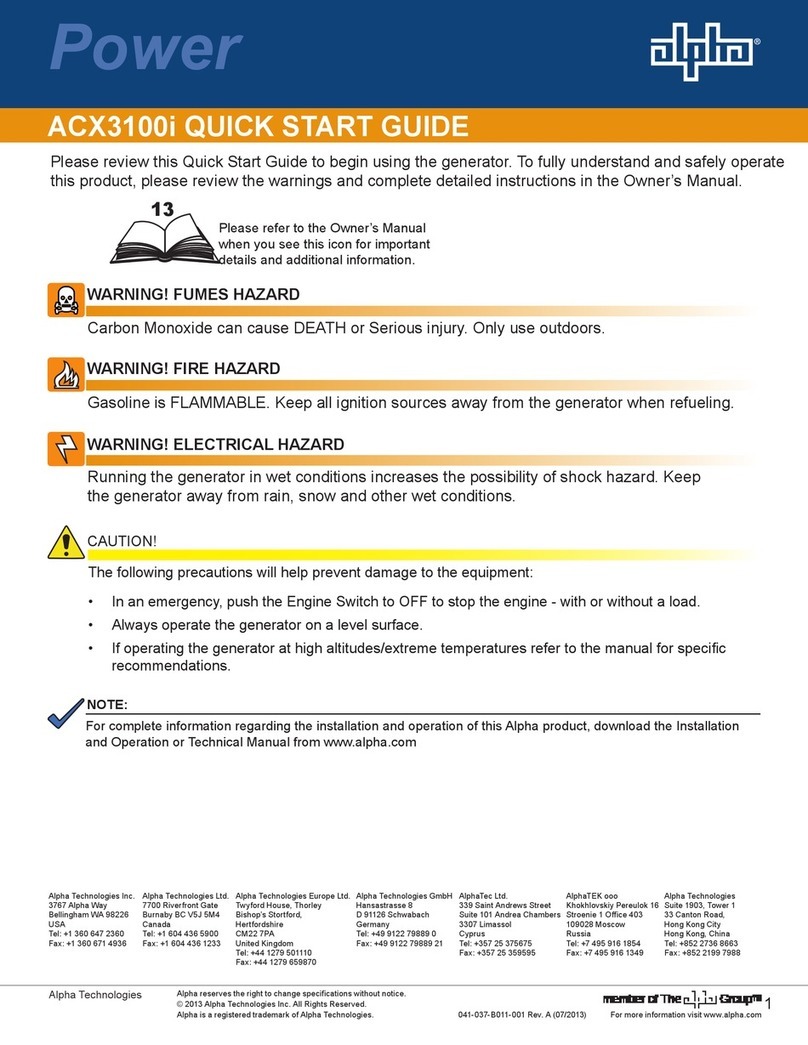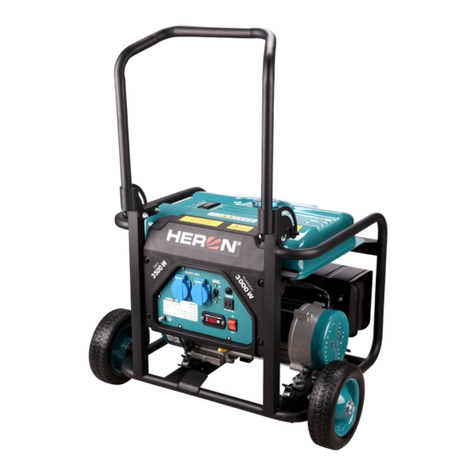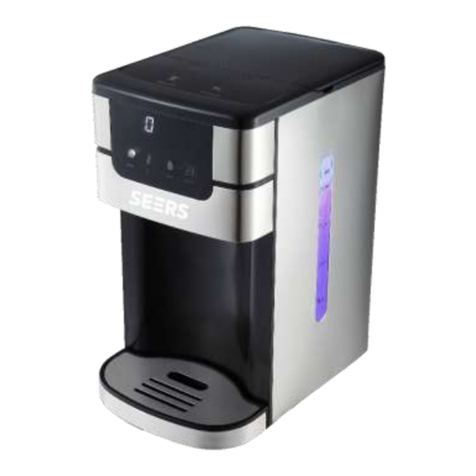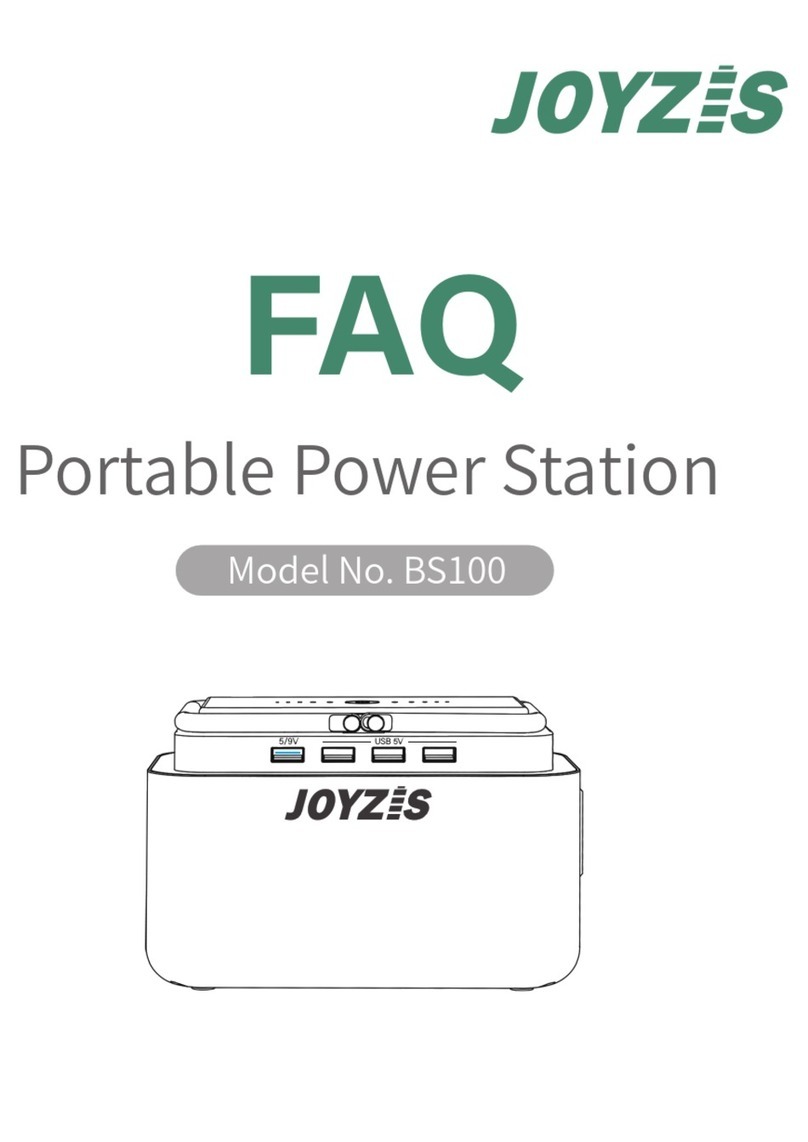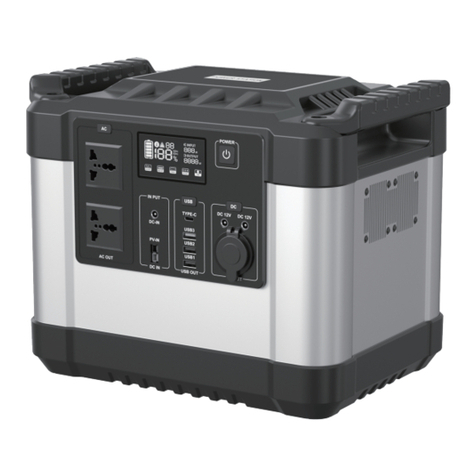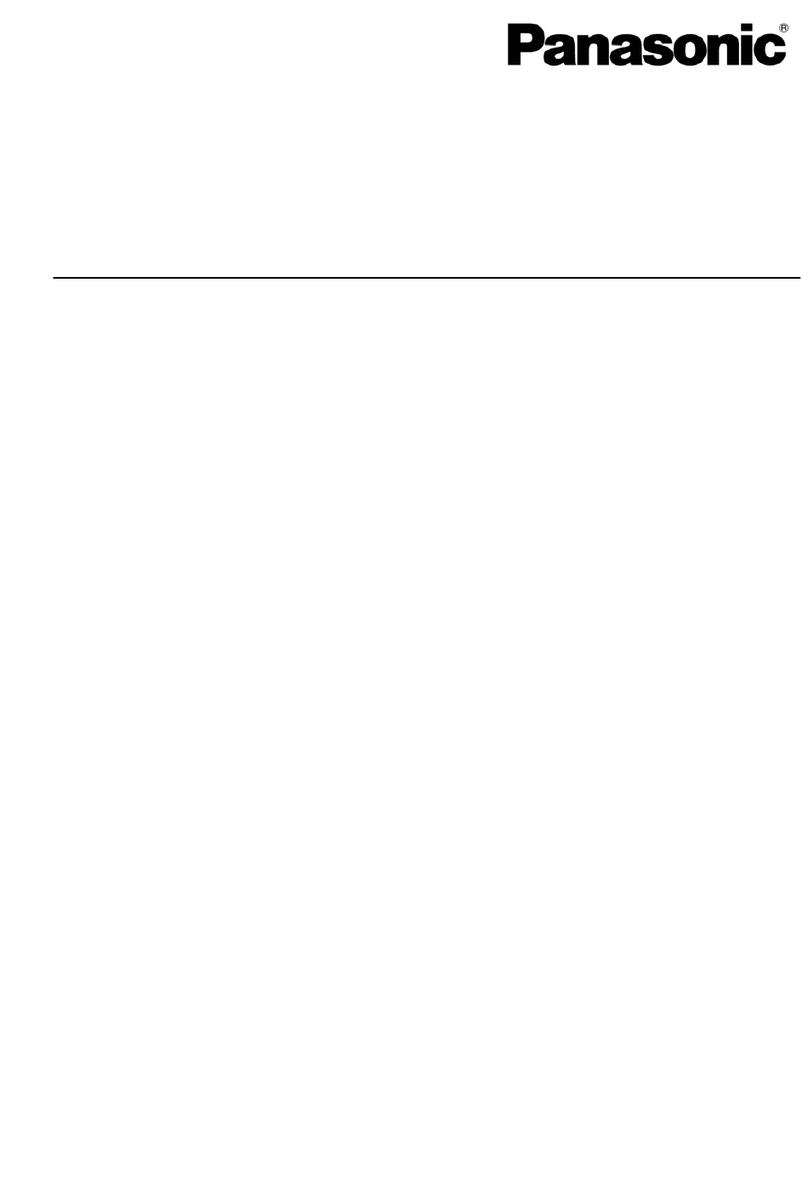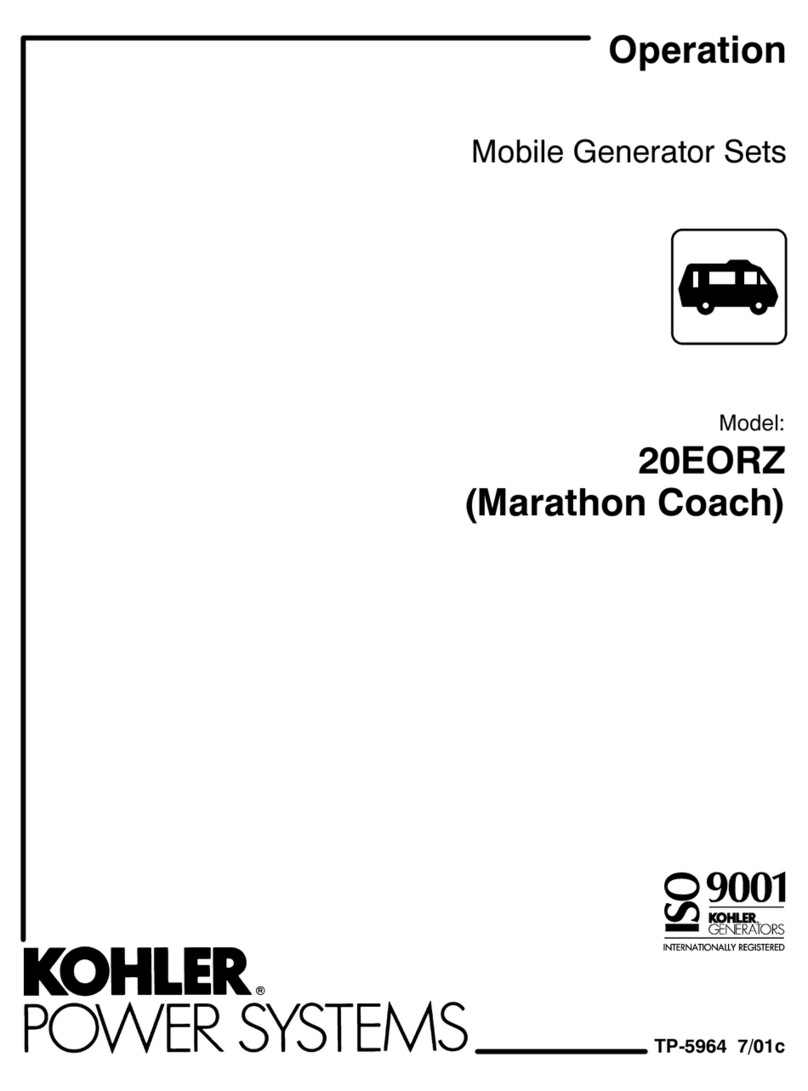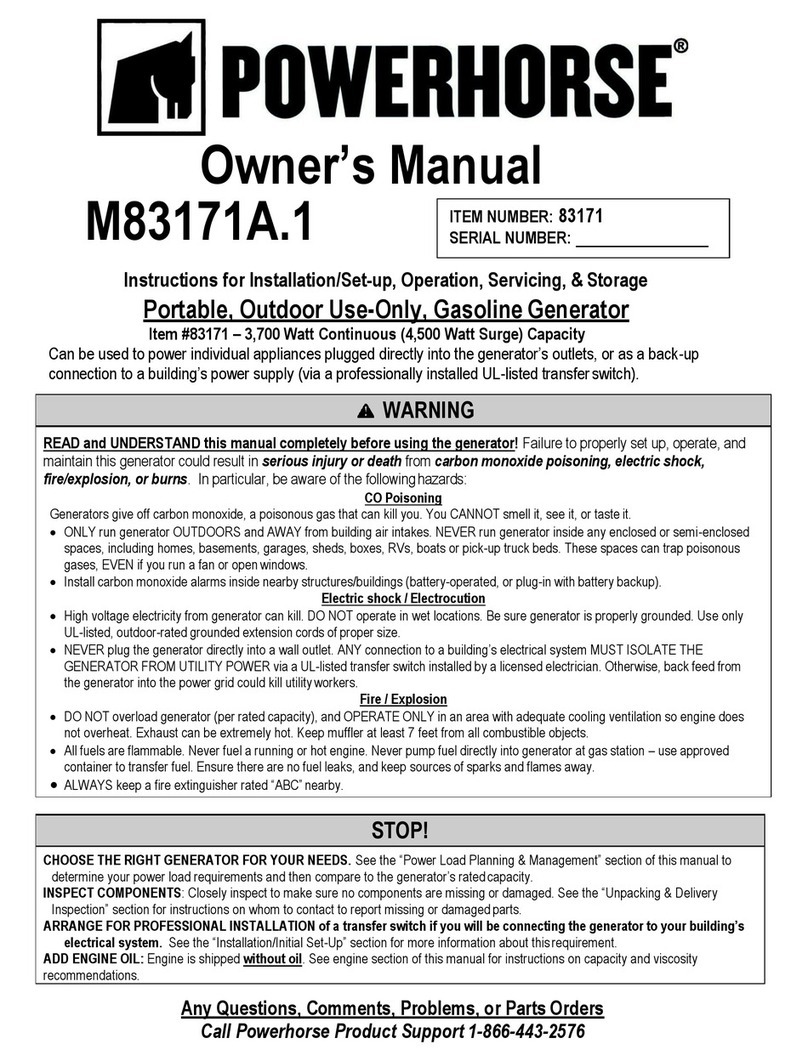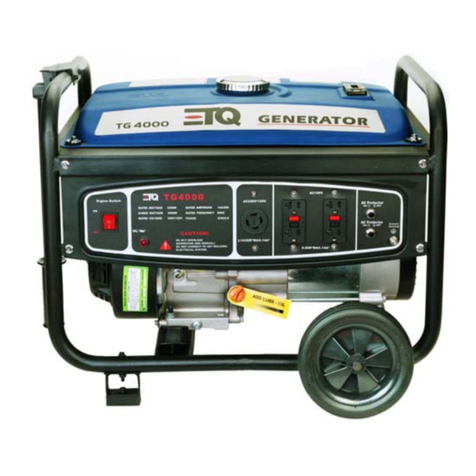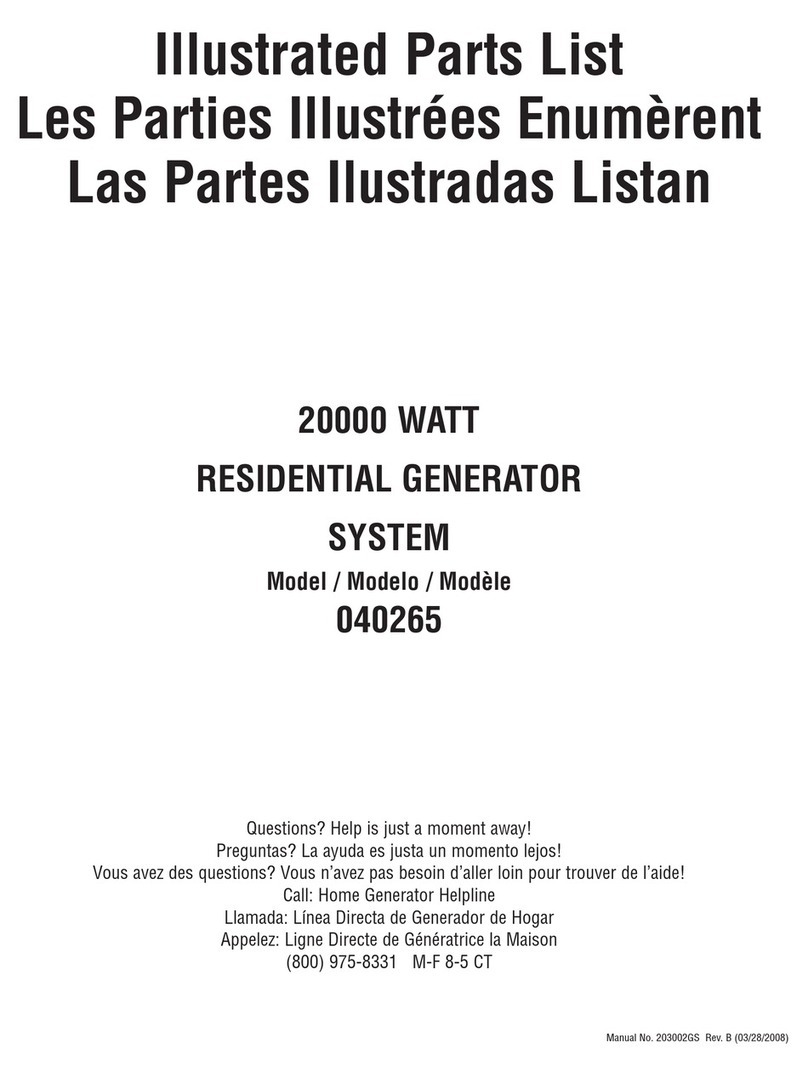
INSTALLATION
GENERAL
Installations must
be
considered individually,
however, the,following installation guidelines should
be
followed. Installations' must conform to local
building codes, fireordinances, and otherlocal, state,
and federal regulations. See Figure
4.
Installation requirements include:
1.
Level mounting surface.
2.
Adequate cooling air
..
3.
Adequate fresh induction air.
4.
Discharge
of
circulated air.
5.
Discharge
of
exhaust gases.
6.
Electrical connections.
7.
Fuel connections.
8.
Accessibility for operation and servicing.
9.
Vibration isolation.
10.
Noise levels.
LOCATION
Provide a location that is protected from the weather
and is dry, clean, dust free and well ventilated.
If
practical, install inside a heated building for protec-
tion from extremes in weather conditions.
The air discharge side
of
set requires 3 inches
(76 mm) clearance from wall to permit set to rock on
its mounts; at least 24 inches (610 mm) clearance is
required around all othersidesforservice accessibili-
ty.
MOUNTING
A permanent type installation needs a sturdy, level,
mounting base
of
concrete, a heavy wood
or
struc-
tural steel
at
least
12
inches (305
mm)high
to aid oil
changing and operating. Place the
7116
inch
(11
mm)
mounting bolts
as
shown in Figure
4.
Carefully assemble the mounting cushions, washers
and spacer bushing on the mounting bolts. The
spacer bushing prevents compression
of
thesnubber
(upper rubber cushion). .
.
~.
O.
ne half inch clearance
II
required between
~olifllter
and mounting
bait
to avoid punc-
turing filter.
For mobile applications (trucks
or
trailers) install
.slide-out rails
or
someothermeans (such
as
doors)
to
provide service space. See Figure
5.
VENTILATION AND COOLING
Air
circulation is needed to dissipate heat produced
.
by
the engine and generator iii normal operation.
Outdoor Installations (Figure 6) can rely on natural
circulation, but mobile, indoor or housed installations
need propersize and positioned vents for required air
flow, Figure
4.
See
SPECIFICA
nONS
for
the
air
requirements at 1800 rpm; . .
Vent sizes depend on variable conditions: (1) size
of
enclosure,
(2)
ambient temperature, (3) electrical
load,
(4)
running time,
(5)
restrictions imposed by
screens, louvers, shutters,
or
filters, and (6) preVailing
wind direction. .
A required volume
of
air mustreach the unit, absorb the heat, and
be discharged away from the installation.
Pressure cooled units need
an
inlet vent with
an
unrestricted opening
of
at least 3-1/2 square feet
(3252
cm2)
for
variables. For discharged air, install
separate ducts from the engine and generator (see
exception)
as
follows:
1.
Theengine discharge
duct
must be the same size
.
as
the engine outlet8 x 10inches (203 x
254
mm).
If
a screen is used in the duct, increase the
duct
size in proportion to the restriction. Consider
installing .the screen diagonally
to
limit
the
restriction and increase duct size
for
runs over 9
fee~
(2.74 m).
If
bends are necessary, use large
radius elbows.
Usea
canvas section.at the set
to
absorb
vibration and noise.
2.
Generator
outlet
du~ts
must be used when units
are installed in compartments
too
smalJfo·r
operator
to
walk. Ducts are recommended
for
all
other indoorinstallations. The air outlet is 5-5/8 x
3 inches (140 x
76
mm). Follow the same prin-
ciples of
duct
design and installation
as
used
for
the engine duct. Engine and generator require
separate ducts.
Vacu-.Flo
Cooling Inlet Vent should be at least 1/3
square foot (309
cm2);
the
duct
for
discharged air
should be at least
as
large
as
the scroll outlet. (See'
SPECIFICATlONS
for
airflow.)
Auxiliaryfans can be used
to
increase
airflow
tounits
installed in small, poorly ventilated
rOOmS.
The fan
size and location should be such that the air inlet
to
.the engine doesn't exceed 120°F (49°C) when run-
ning at full rated
load~
I .WARNING , Utilizing eXhaul.t. heat to warm a room
or
compartment occupied by people is
not
recommended due to possible leakage
of
harmful exhaust gases.
EXHAUST
GASES
ARE DEADLY
POISONOUS!
7.
